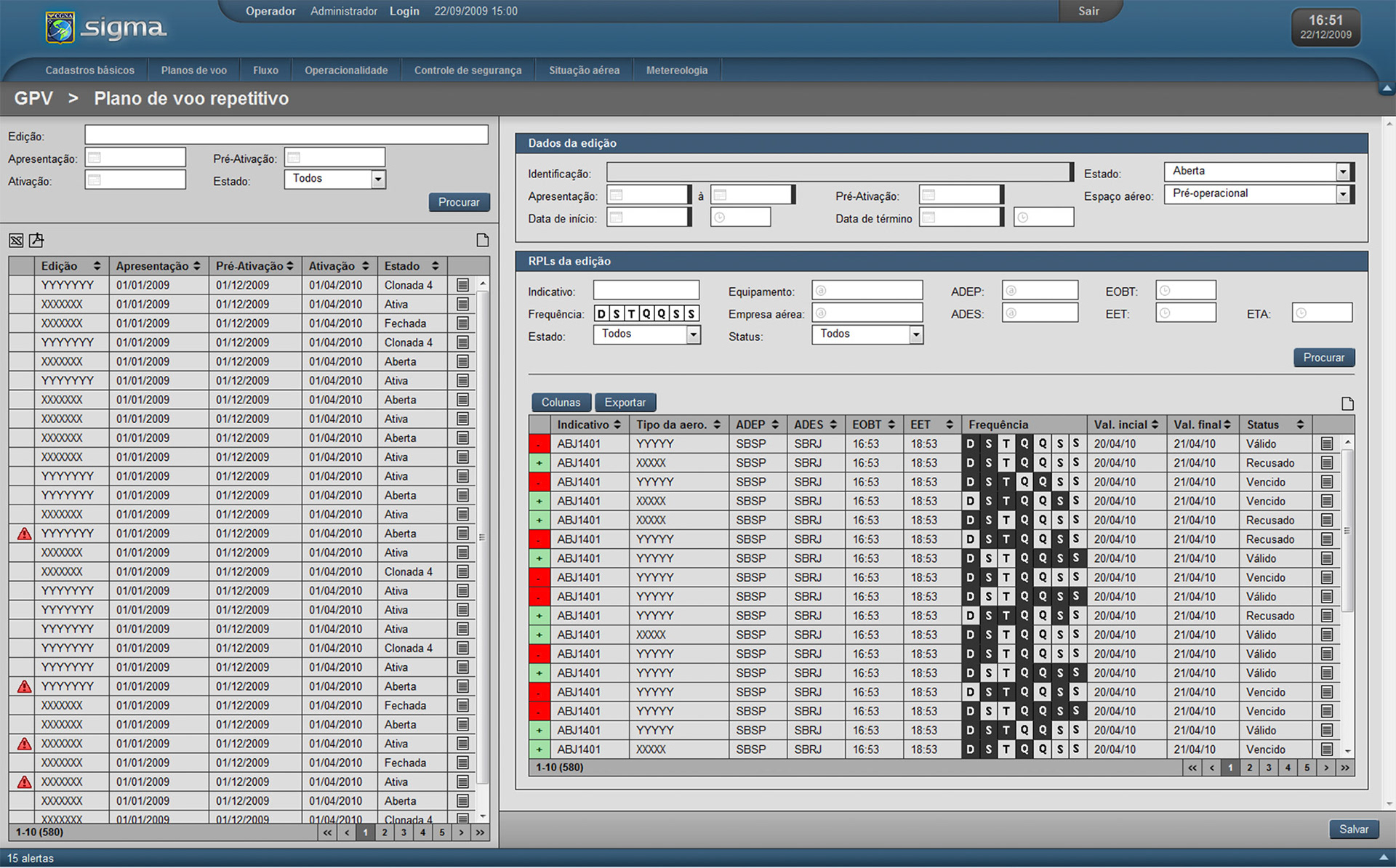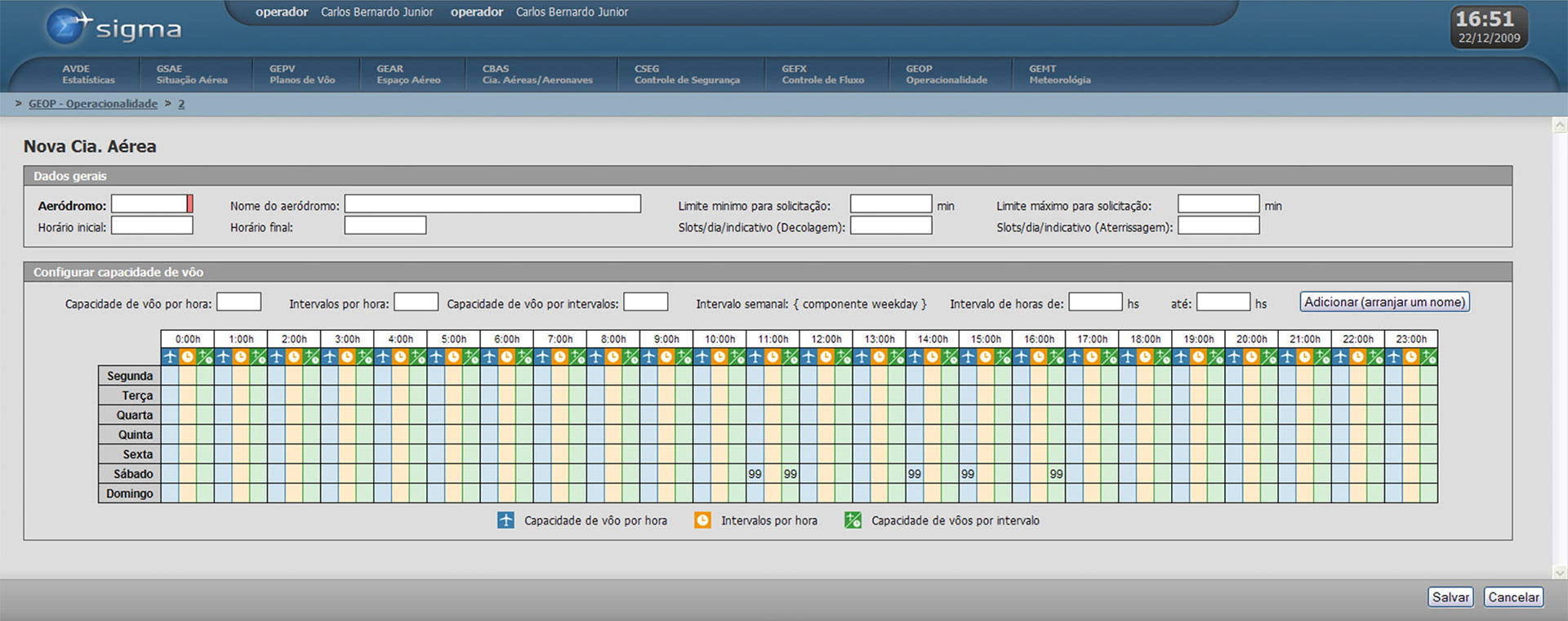My role: Lead Service/UX/UI Designer (service design, user experience, interaction design, user research)
Year: 2009
Client: Brazilian Air Force - CGNA
Company I was working for: Atech
Length of project: 24 months
Deliverables: Coded high-fidelity prototype, user journeys, workshops
Tools: HTML, CSS, Javascript, jQuery, PHP, MySQL, Adobe CC
Link: https://atech.com.br/en/air-traffic-management/air-traffic-management-systems/
Year: 2009
Client: Brazilian Air Force - CGNA
Company I was working for: Atech
Length of project: 24 months
Deliverables: Coded high-fidelity prototype, user journeys, workshops
Tools: HTML, CSS, Javascript, jQuery, PHP, MySQL, Adobe CC
Link: https://atech.com.br/en/air-traffic-management/air-traffic-management-systems/
Overview
I led the UX/UI design of the Air Traffic management system (Sigma), which allowed airflow management and monitoring processes. Information on the status of all airports in Brazil is displayed on screens installed in the control room, along with radar images showing flight information and aircraft location in the airspace of these regions.
The Brazilian airspace
This project was commissioned by Brazil’s Department of Airspace Control (DECEA), a governmental and military organisation of the Aeronautics Command, which is subordinated to the Ministry of Defense. Its mission is to manage the operationality of the air traffic services on the Brazilian sovereign airspace.
Challenge
Sigma was the most challenging project in my career. First, I had to be trained on airspace regulations and equipment types in airports. Then, I went through some air traffic controller training to understand the business and user needs.
Because of the intricated nature of this project, I created mind maps for the screens before starting wireframing.
This software is a critical system that, in case of failure, could affect people’s lives. Therefore, I had to do profound research around colours and screen performance; I used colours that were primarily neutral for most of the system, the colours need to be comfortable to be looked at for long hours. Also, I used contrasting colours to indicate points of interest that need to be quickly observed by the flight controllers.
I created a Design System that was tested thoroughly, and then I coded the prototype using HTML, CSS, Javascript, PHP, and MySQL. That allowed the test of realistic use cases that could be demonstrated to the Stakeholders before the development team started to create the frontend using Java. I designed all the pages with no dependency on images, meaning everything was made using only HTML and CSS to avoid performance issues.



Results
This project was a game-changer for aviation in Brazil, especially on events such as the 2014 FIFA World Cup and the Rio 2016 Summer Olympic and Paralympic Games. The system allowed a reduced time between flights with security and efficient use of airspace.